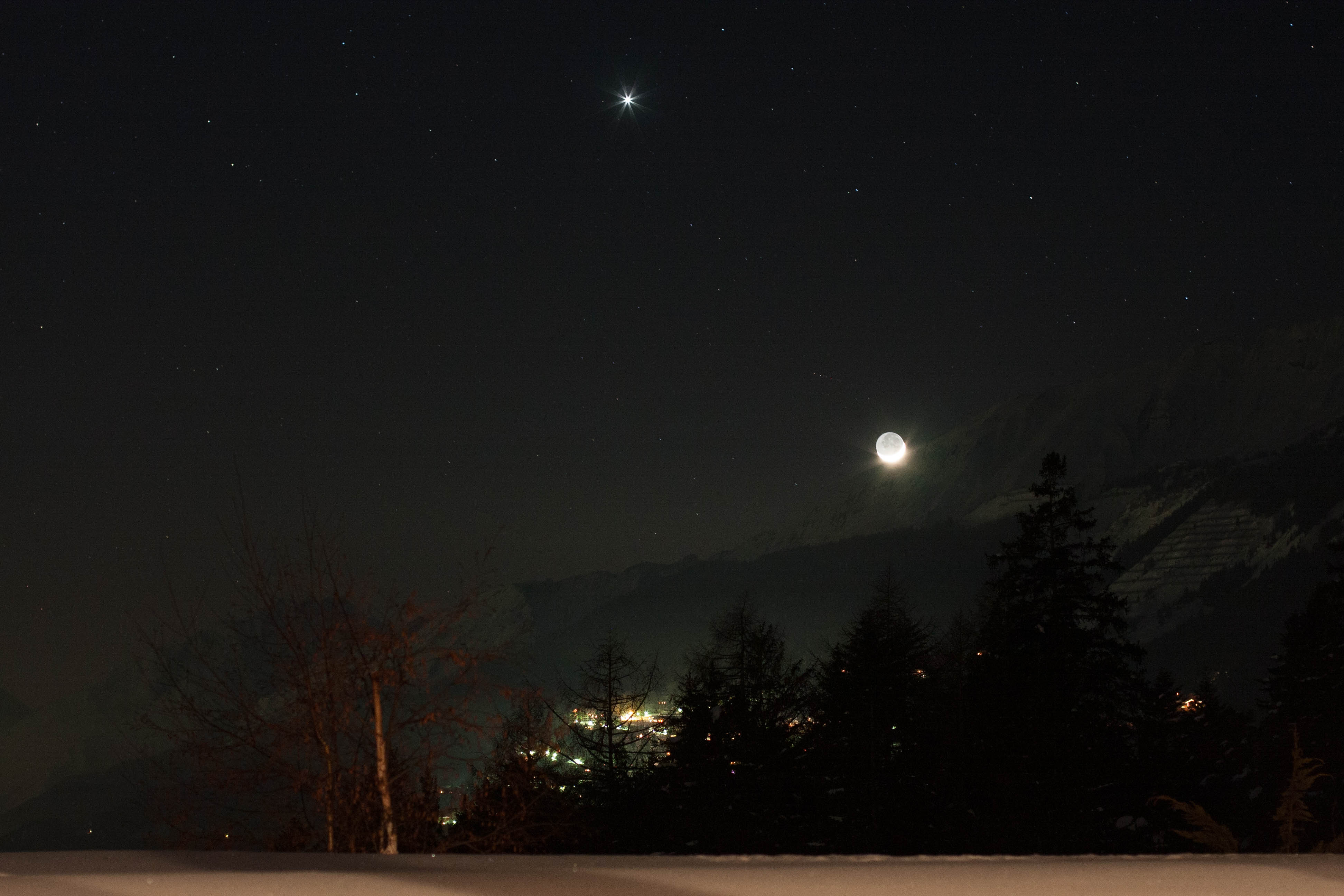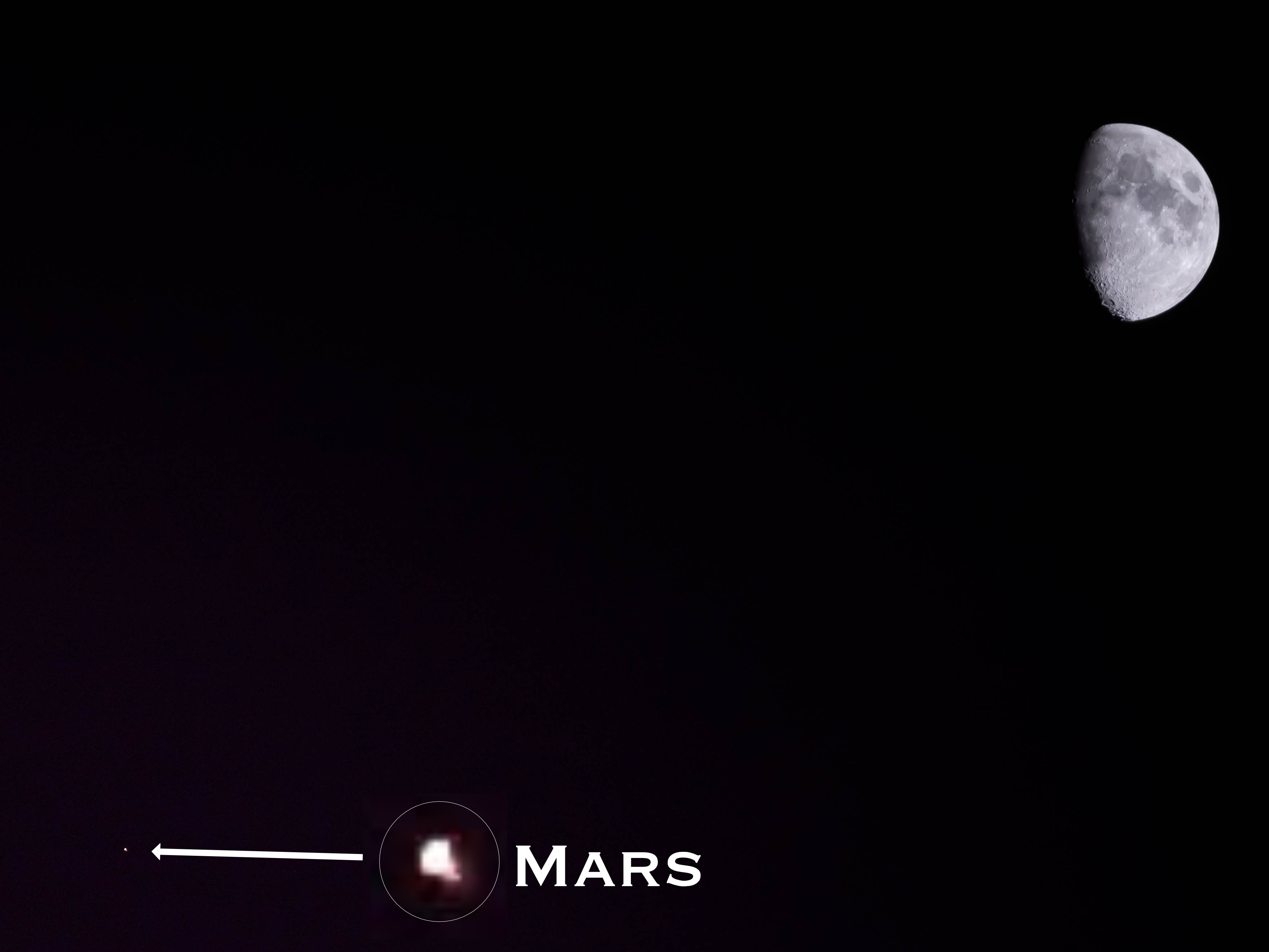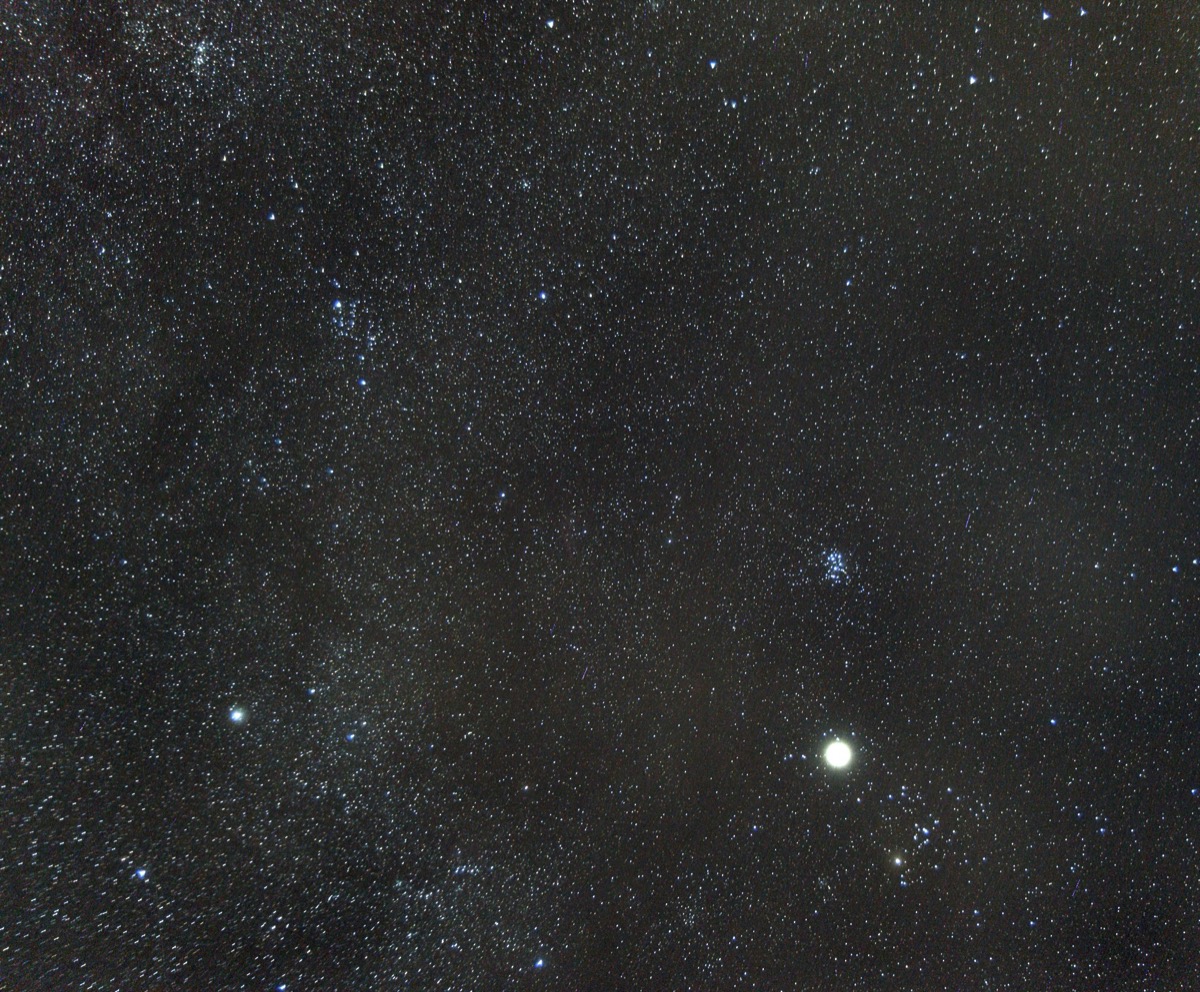Conjunctions
Astronomical conjunctions occur when two or more celestial bodies appear to come very close together in the sky as seen from Earth. These events can involve planets, stars, moons, comets, or other celestial objects. Conjunctions can be classified into different types depending on the apparent proximity of the objects and their position in the sky.
Lunar conjunction
This occurs when the Moon passes close to a star, planet, or another moon. Lunar conjunctions can also make these objects easier to spot in the night sky.
Conjunction between the Moon and Venus, Crans Montana.
Geocentric conjunction
This is a conjunction observed from Earth, where two objects appear close together in the sky.
Here is a conjunction between Jupiter and the Pleiades. Stacking of several photos taken with a Canon 7D.
This photo, taken on April 1, 2013, shows a beautiful portion of the night sky. At the bottom right, Jupiter shines brightly near the open cluster of the Pleiades (M45), in the constellation Taurus.
Other types of conjunctions
Planetary conjunction
This occurs when two or more planets appear to come close together in the sky. Planetary conjunctions are often visible to the naked eye and can create striking visual configurations.
Solar conjunction
This is the apparent proximity of a celestial object to the Sun from the Earth’s perspective. A solar conjunction may involve a planet, star, or even a comet.
Galactic conjunction
This is a particular alignment where Earth, the Sun, and the Moon are roughly in line with the direction of the center of the Milky Way galaxy.
Heliocentric conjunction
This occurs when two celestial bodies appear close together from the Sun’s point of view. Heliocentric conjunctions are useful for astronomers studying the motion and interactions of solar system objects.


